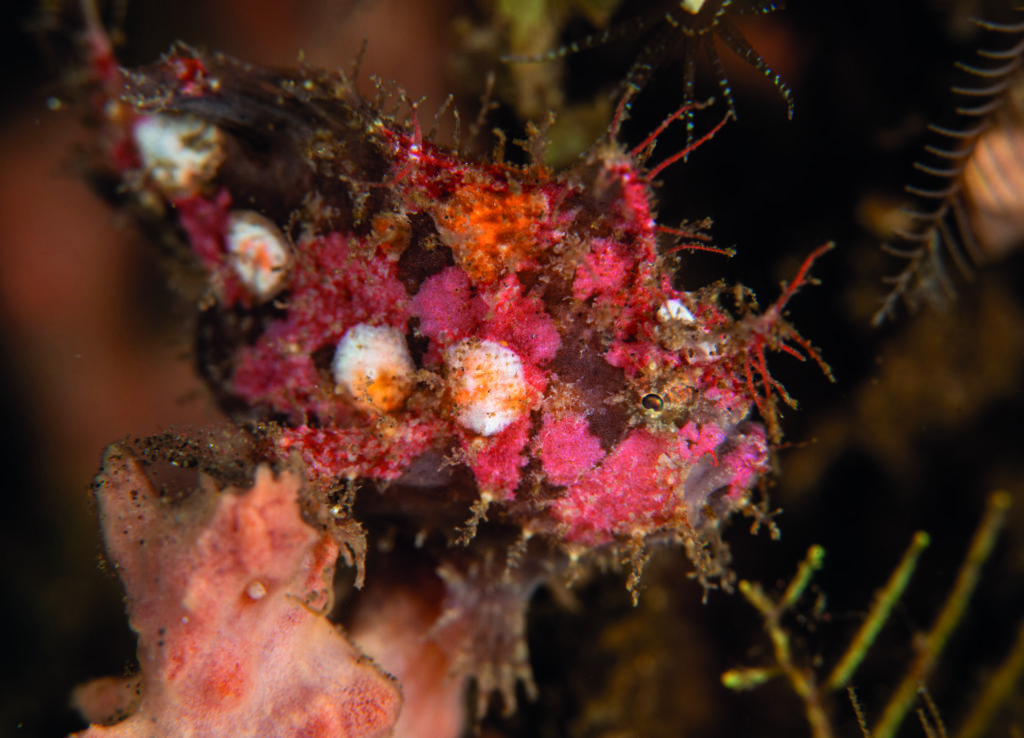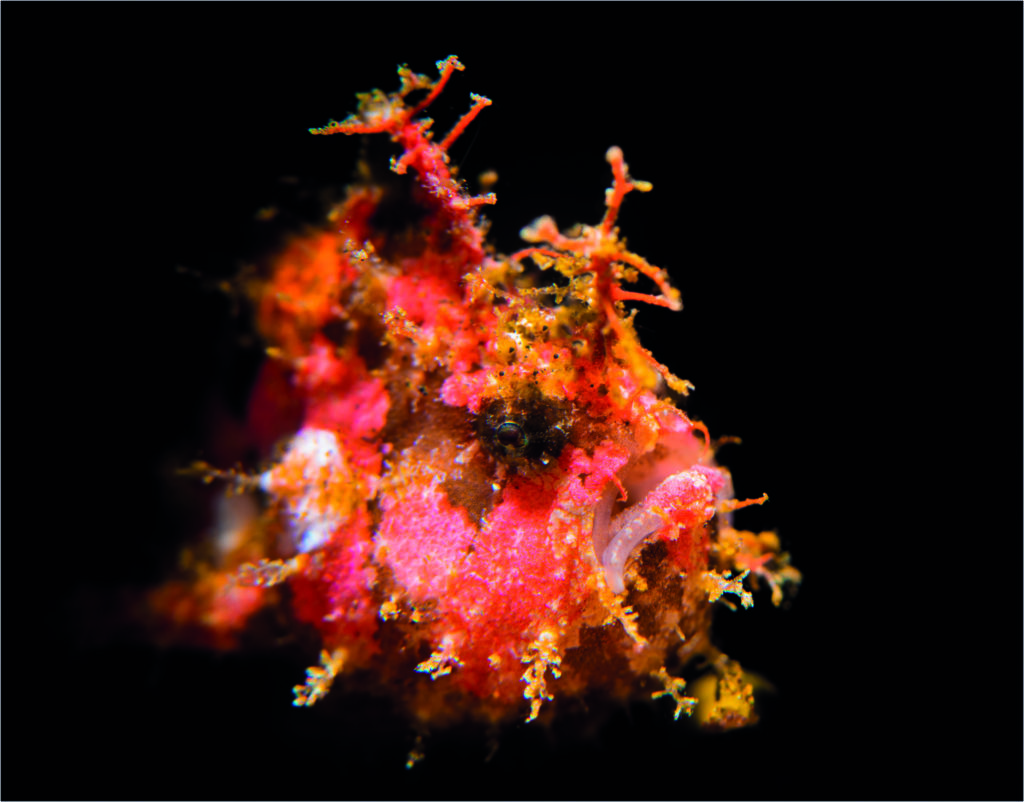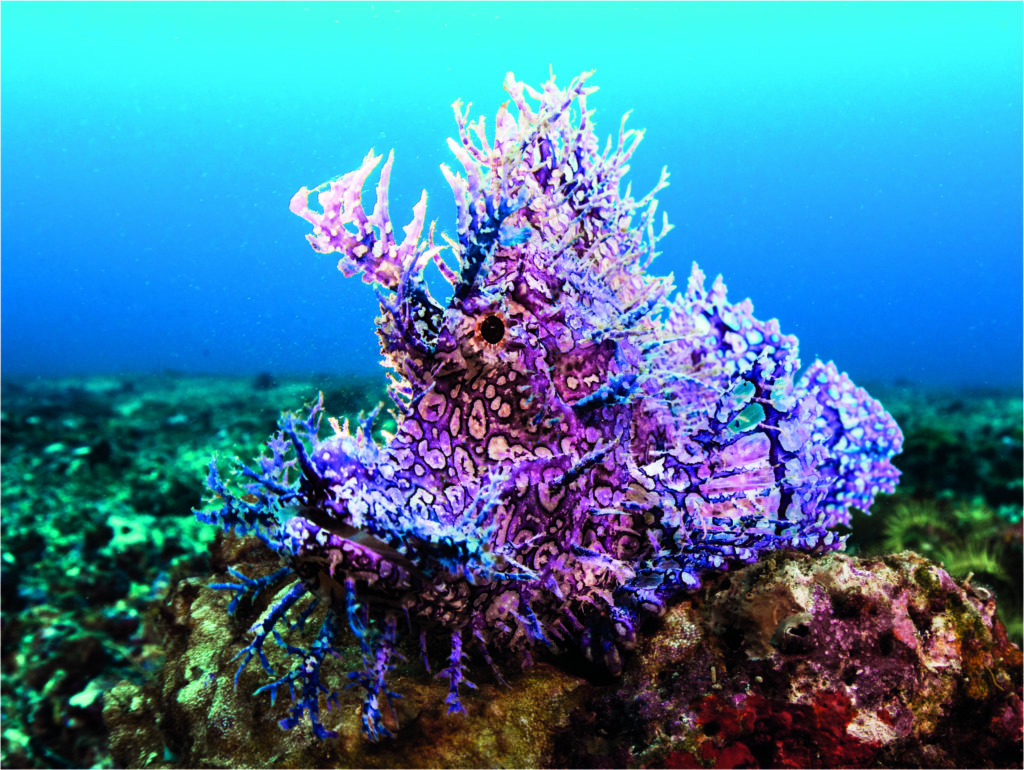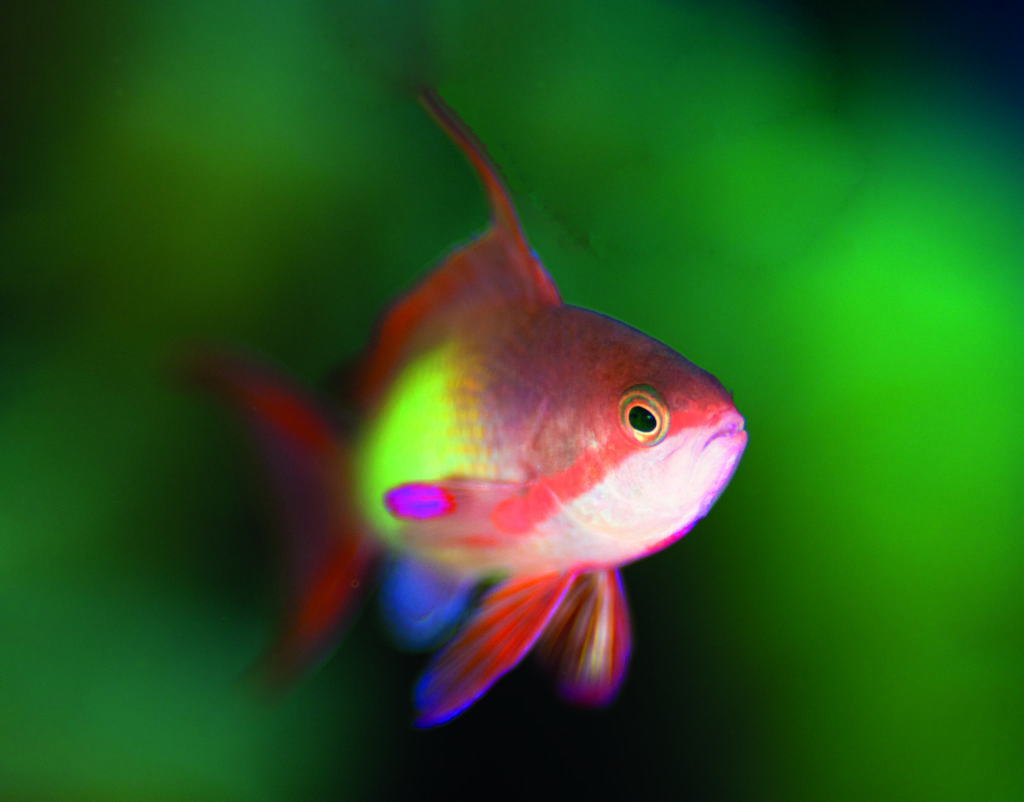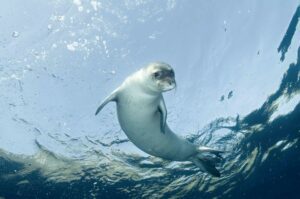Martyn Guess provides some tips on how we can all improve our macro photography by paying attention to the background or negative space
Photographs by Martyn Guess
In any type of photography, we need to be aware of the background behind the subject – the picture of the lamp post behind your loved one’s head comes to mind! It is important that we deal with the background behind the subject, in a positive and creative way, and to take control.
The background or negative space behind the subject can make the picture a good picture or a bad one (see picture of the Rosie Frogfish, where the subject is blending in with the background and the picture is a little confusing). The common mistake is to capture the image with the camera pointing towards the reef and to light the whole scene.
A distracting background like this overpowers the image and dilutes the impact of the subject. Separating the subject from the background will make it stand out and lift the image (see the image of the same frogfish as in image above , but this time lit carefully with a snoot (narrow beam of light) to hide the complicated reef background).
There are many lighting techniques we can use to achieve this separation and which I have covered in an earlier article on macro lighting. These include:
Snoot lighting – where a snoot is attached to the strobe and a very narrow beam of light is emitted – more on this later.
Cross lighting – where the strobes are pointed at each other in front of the camera to cut out light hitting the background and also help to create texture as it is a fairly harsh directional light see image.
Inward lighting – an extreme version of cross lighting with the strobes pointing back towards your head on longer strobe arms and out of the field of view. This is useful where the background is very close to the subject as only the edge of the beam is used – I remove the strobe diffusers to help give a sharp edge to the beam.
Back lighting – where the light source is placed behind the subject and blacks out the background and is very useful where the subject is right on the bottom. This technique will create memorable and sometime abstract images. All of these techniques work best with closed apertures and faster speeds.
We can also take control of the colour of the background water column. Pointing upwards into the water column and using a fast speed will help to darken the background and slowing the speed right down to say 1/60th second will help you achieve a blue background. I keep reducing or increasing the speed until I get the desired colour background.
A very good method of separating the subject from the negative space behind is to use lower apertures and create a pleasing Bokeh or blurred background. There are subtle differences between apertures, so try a few different settings on each subject until you get the effect you require by reducing the aperture a step at a time.
Beware that as the aperture opens, the depth of field reduces and with a fully open aperture, the choice of focus point is critical – often the eye of the subject or the rhinophore of a nudibranch, for example. As the aperture opens the amount of light hitting the sensor increases, so control this by reducing strobe power and /or ISO or increasing the speed – or a combination of everything.
I sometimes use artificial creative backgrounds such as sparkly Perspex or even metallic scouring pads. These can only be used where it is safe to hold them behind the subject and not to touch or disturb the critter, such as a whip coral gobie with plenty of open water behind the whip coral. Artificial backgrounds work best with relatively open apertures.
Moving the background closer or further apart will create a different look. Reflections are also a wonderful background if you are lucky enough to find a subject close to the surface.
When shooting be aware of the background behind the subject and look for interesting and uncomplicated negative space. I often swim around the reef looking for an interesting background colour – often a sponge – and then wait for a critter to appear to set it against. Sometimes by simply changing the angle of the shot you can find a more-interesting background or lose something which will overpower the image so look carefully around the subject to get the best angle of view.
Coming back to snoot lighting, this is in my opinion one of the easiest techniques to use to hide a difficult background. A dive guide or buddy can hold the snooted strobe for you and direct the beam of light onto the subject. Work as a team and if using a buddy, reciprocate for them.
The Retra LSD snoot is one of the best that I have used, and it is easy to see where the strobe light will hit the subject as the in-built spotting light in the strobe shines through the tube and this can then be accurately directed.
I set the strobe power to about ¾ and then change the exposure by adjusting the ISO leaving the aperture fairly closed at say F22 and the speed at the maximum the camera will sync at – in my case on a Nikon D5, 1/320th. I start with a lowish ISO and increase as needed. Check the Histogram after every shot to make sure that highlights haven’t been blown, as the snooted light is both bright and harsh.
An interesting snooting technique is to lower the speed so that the background is darkened, but not entirely black – this will give you a slightly different image than just a black background.
Generally, the snoot is pointed straight downwards for portraits of critters and will give great separation from the bottom where the subjects live. Remember, snoot light is very harsh as it is not diffused so is great for showing off texture, such as the skin of frogfish.
When you next dive with a camera think about backgrounds and try some of these techniques to help your images stand out.
MY ESCORTED TRIPS
Want to learn how to take or improve your underwater images? Why not come on a photo-specific trip? These trips are meticulously planned to the best destinations at the best time of year where the conditions should be perfect for building a portfolio of great images.
The workshops, which are for all levels of experience but mainly aimed at people with a few trips under their belts, include classroom sessions and presentations as well as in-water help and guidance, all done in a relaxed and non-competitive friendly environment.
I am leading a trip for Scuba Travel to Lembeh Resort in Indonesia in Oct/Nov 2022.
Biography – Martyn Guess
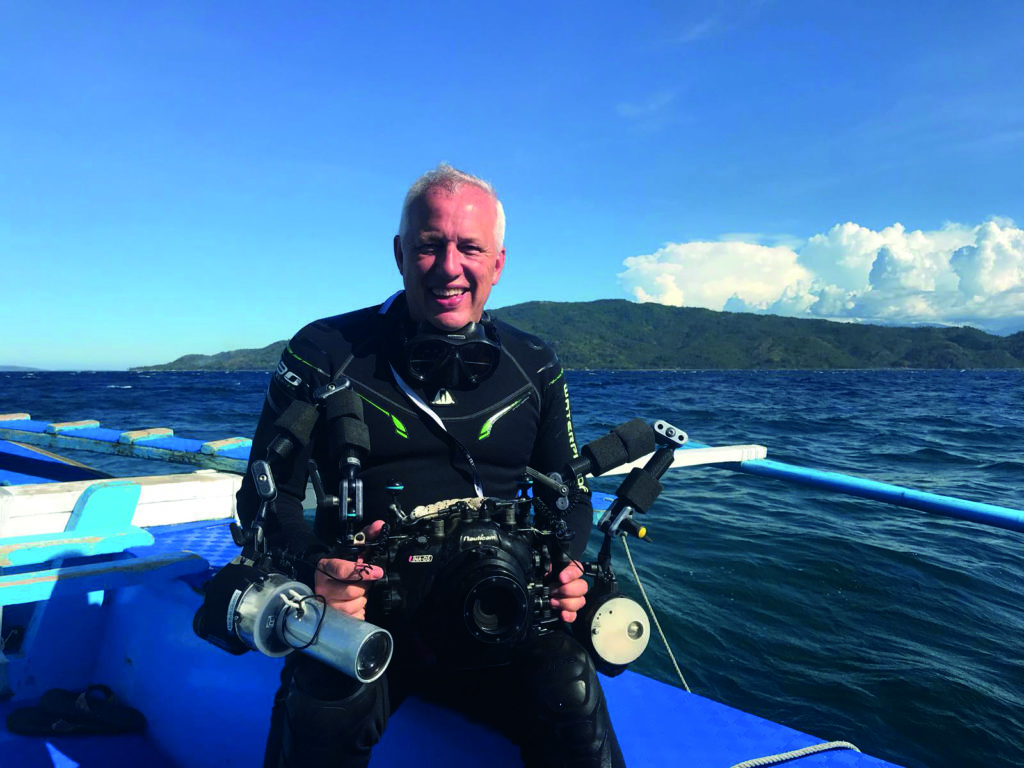
Martyn has been diving for over 30 years and taking underwater images for over 25 years. He has been very successful in National and International competitions and regularly makes presentations to Camera and Photography clubs and Diving shows as well as The British Society of Underwater Photographers (BSOUP)and other underwater photography groups. Today he shares his passion and knowledge – As well as teaching underwater photography courses he leads overseas workshop trips for Scuba Travel. Check out his IG account at martynguess_photography.

